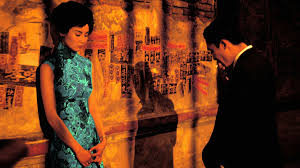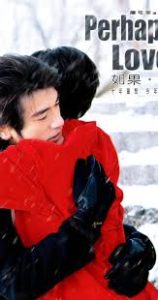Chinese Movies: A Different Romantic And Fantastic World
Chinese Movies: A Different Romantic And Fantastic World
When people are talking about Chinese film, what do they actually talk about? Poor villages? Realism movies? Darkness and struggle in the lower class? Swordsmen? Action?
Actually, these labels are just labels and can’t classify all Chinese films. Today, let me introduce some totally different Chinese movies for you and lead you into the romantic and fantastic Chinese movie world. Also, even though Zhang Yimou is an amazing, genius director, he isn’t the only one. Thus, I’d like to introduce other extraordinary directors to you, by their movies.
Farewell My Concubine (Directed by Chen Kaige) IMDB 8.1
The story mainly talks about two men’s friendship and love over 50 years. Their relationship is complex and meaningful, especially under the Chinese cultural revolution.
There are three reasons about why I recommend this movie:
- The movie shows a lot of Peking opera and Chinese traditional cultures, which can lead audiences into a special China in mid-20th century.
- The visual style and composition are very impressive. A lot of lighting usage and color design both draw the characters’ inner world and their emotions clearly. Also, lighting changes combine the real world and the drama world together. When characters are playing roles in the Peking opera, their real lives and real emotions are also built up by the plots in opera, which is like a play in a play. This kind of narrative method is smart and we can learn from it as a TRF (Television, Radio and Film) student. It’s a good try to tell a story by two narrative lines and the twist of story lines can deepen characters’ personalities gradually.
- The movie got a lot of awards and nominations in the top film festivals. For example, the movie won the Palme d’Or in Cannes Film Festival in 1993, and was also nominated the Best Foreign Language Film in Academy Awards in 1994. These awards and nominations show that there must be a place for these movies in movie history and filmmakers shouldn’t miss it.
The Sun Also Rise (Directed by Jiang Wen) IMDB 7.1
This movie mainly talks about stories that happened in the period from 1958 to 1976 in the South, North, West and East of China. In appearance, the four stories are independent, but there is actually a special interconnection among them. The link is “Desire”. In the special period, in China, people’s material life and desire were limited. However, on the other hand, people seemingly had more imagination about the land they were living in. People were also more romantic than they are now; they wrote poems, sang beautiful songs, lived in a colorful villages and believed in love.
Two reasons that I want to recommend this movie are below:
- It’s different from those Chinese realism movies; The Sun Also Rise can be defined as post-modernism film. Its art, structure and aesthetics all build up a fantastic and romantic world. It can break up people’s original ideas about Chinese movies and is very much worth watching.
- The narrative method of the movie is very unique. So to some extent, the movie is similar to Pulp Fiction, which was produced by Quentin Tarantino. Filmmakers can get some inspiration from this kind of multi-narrative movie.
In the Mood for Love (Directed by Wang Kar-Wai) IMDB 8.1
It’s a love story, but not of a traditional style. A man and a woman, who both have their own families, fall in love with each other over the course of several meetings in a narrow alley. However, their love is not dramatic one. They try to keep a platonic bond so that they can protect their lives away from the daily grind.
Two reasons that I want to recommend the movie are below:
- The composition and lighting are always used as an example to teach film-making students. Director Kar-Wai is very good at emphasizing character’s inner worlds with lighting. Also, the slow-motion in the movie is a good example for students to learn from.
- The story also shows urbanites’ love concept. They try to form a bond with their lover, but they also try to escape from that bond. This kind of love relationship, to some extent, can be regarded as an oriental love. These people are used to hiding their emotions and the love in their hearts, rather than telling them out loud, which is different from the Western culture. Thus, in many Asian movies, audiences should feel characters’ emotions instead of seeing them.
Perhaps Love (Directed by Chen Kexin) IMDB 6.9
It’s a musical. And yes, it’s a musical which is similar with La La Land. The story is about a young couple’s love and their dreams. Yes, the girl tries to be a superstar in the film-making industry and the boy has a dream of being a director. Similar with La La Land? Several years later they meet with each other again, after they’ve broken up, in a movie. They both become famous actors and need to play a couple in the new movie.
Two reasons that I want to recommend the movie are below:
- It’s not usual for Chinese directors to produce a musical. However, Perhaps Love creates a fantastic world through its music and dance. I think it could be the best Chinese musical.
- A play in a play, as a narrative method, makes the love story unique and unforgettable. It shows the cruelty and struggles of love by combining the real world and the movie characters shooting. It makes audiences feel the characters’ fates and their pensiveness. Undoubtedly, it’s a clever way to make a traditional love story popular again.
Suzhou River (Directed by Lou Ye) IMDB 7.5
Lou Ye is very special independent film director. His movies always show a kind of separate and confused atmosphere in an industrial environment. Polluted air, a dirty river, traffic noise and bad weather usually can be drawn in his movies. They’re important elements to build up his movie world.
Suzhou River is one of the most typical among his films. The story is a narrative by a cinematographer whom audiences never see in the movie. Everything we can see is shot by thi man. Thus, shaking POV and a lot of camera movement are the sources of the main visual style in the movie.
According to the cinematographer’s voice over and his shots, we can know that it is a story about two love relationships. The main connection between the two relationships is that the two girls have the same appearance. The story tries to use these shaking shots to discuss love with his audience.
Two reasons that I want to recommend the movie are below:
- The visual style is pretty unique.
- The lighting and color correction of the movie create a beautiful industrial society and also show people’s feelings when they’re living in the environment. It’s a good example for young filmmakers to learn lighting and creative shots.









